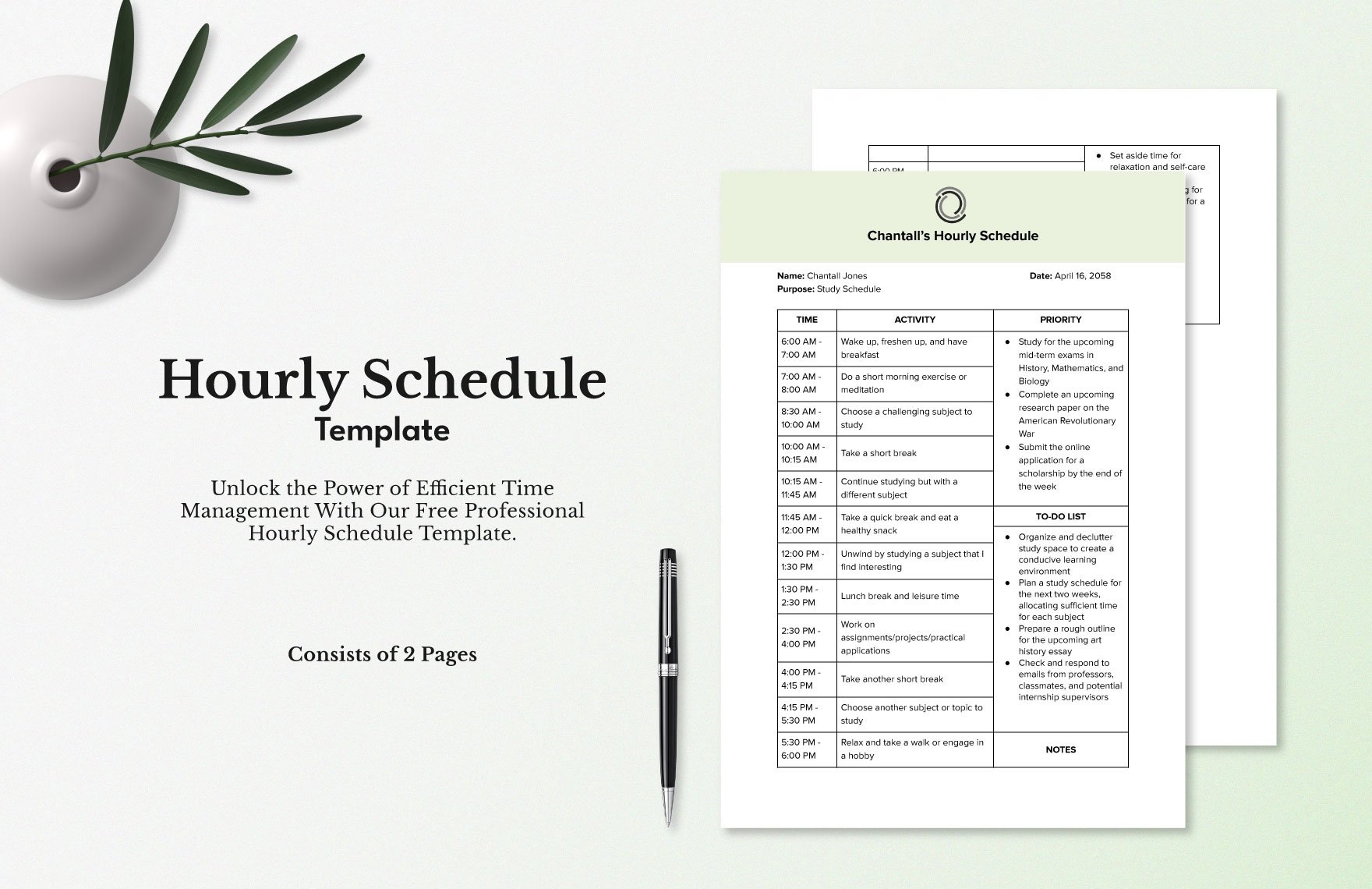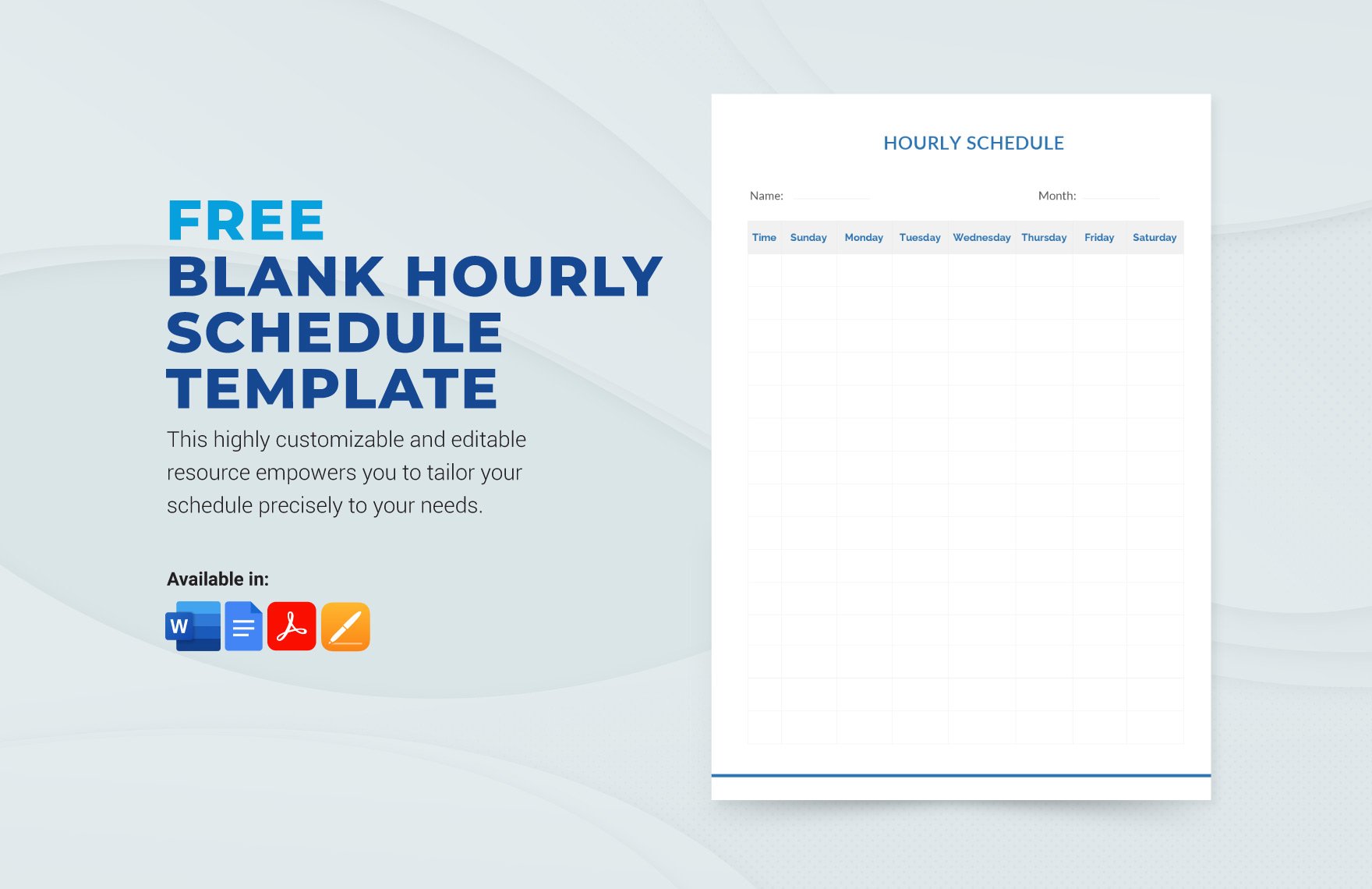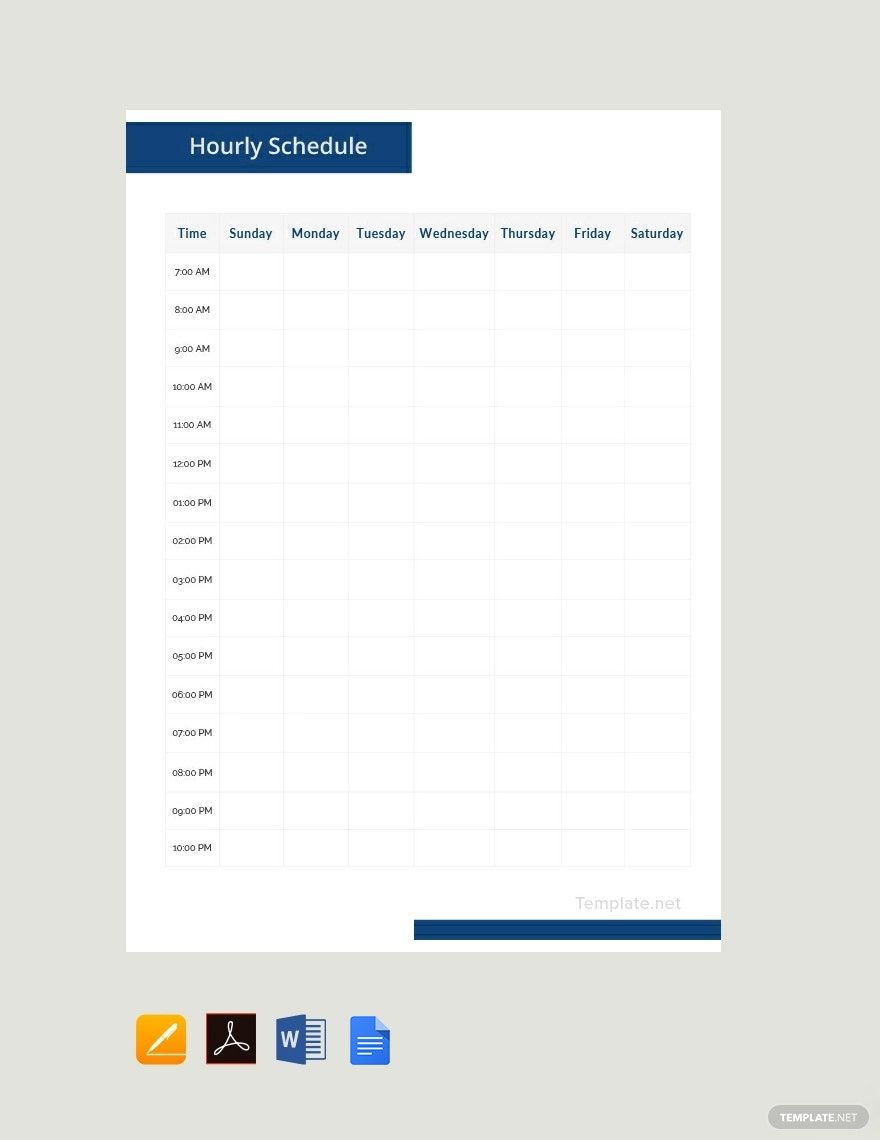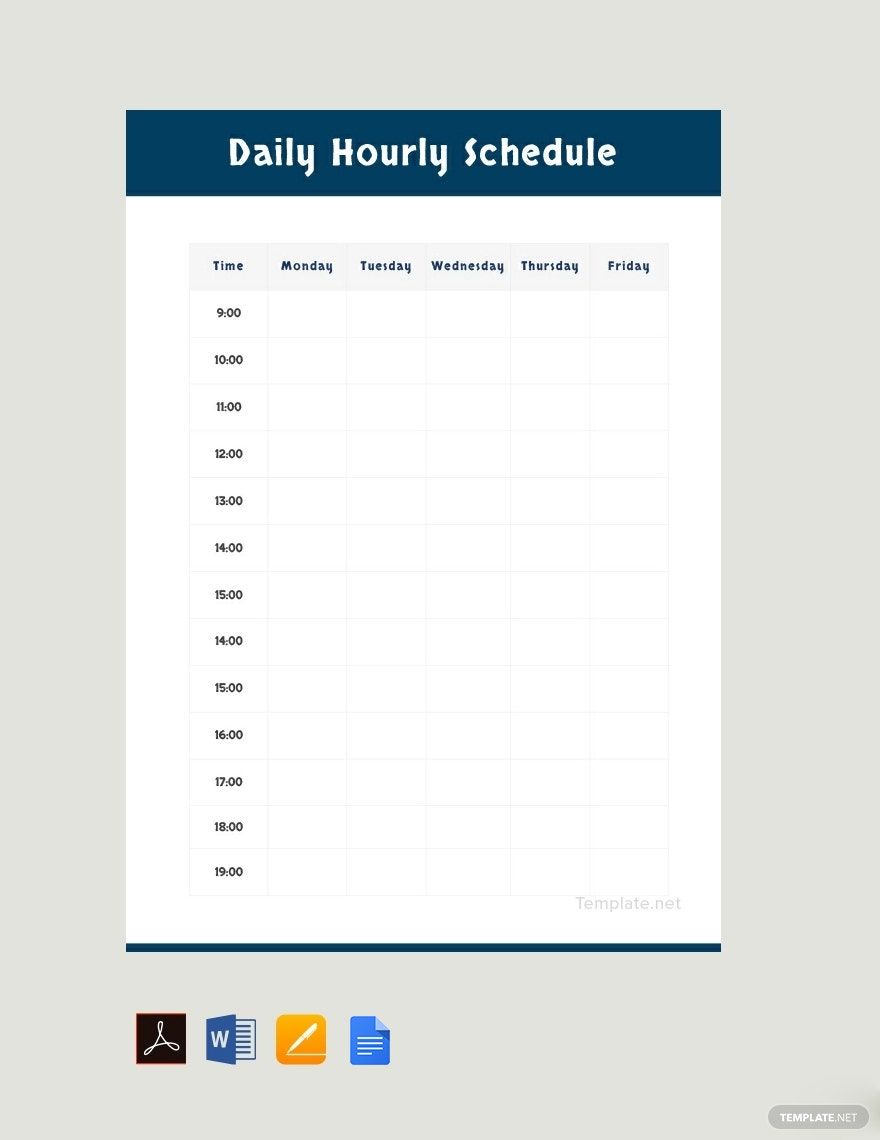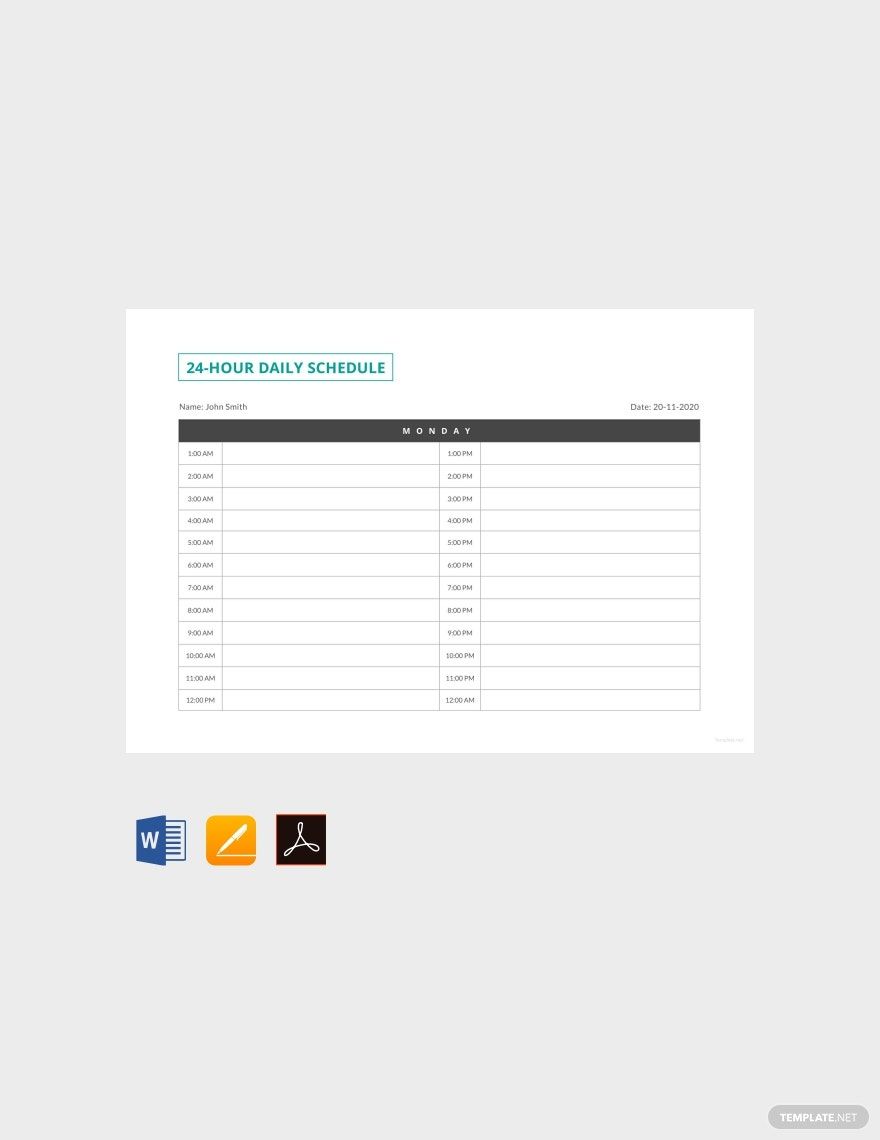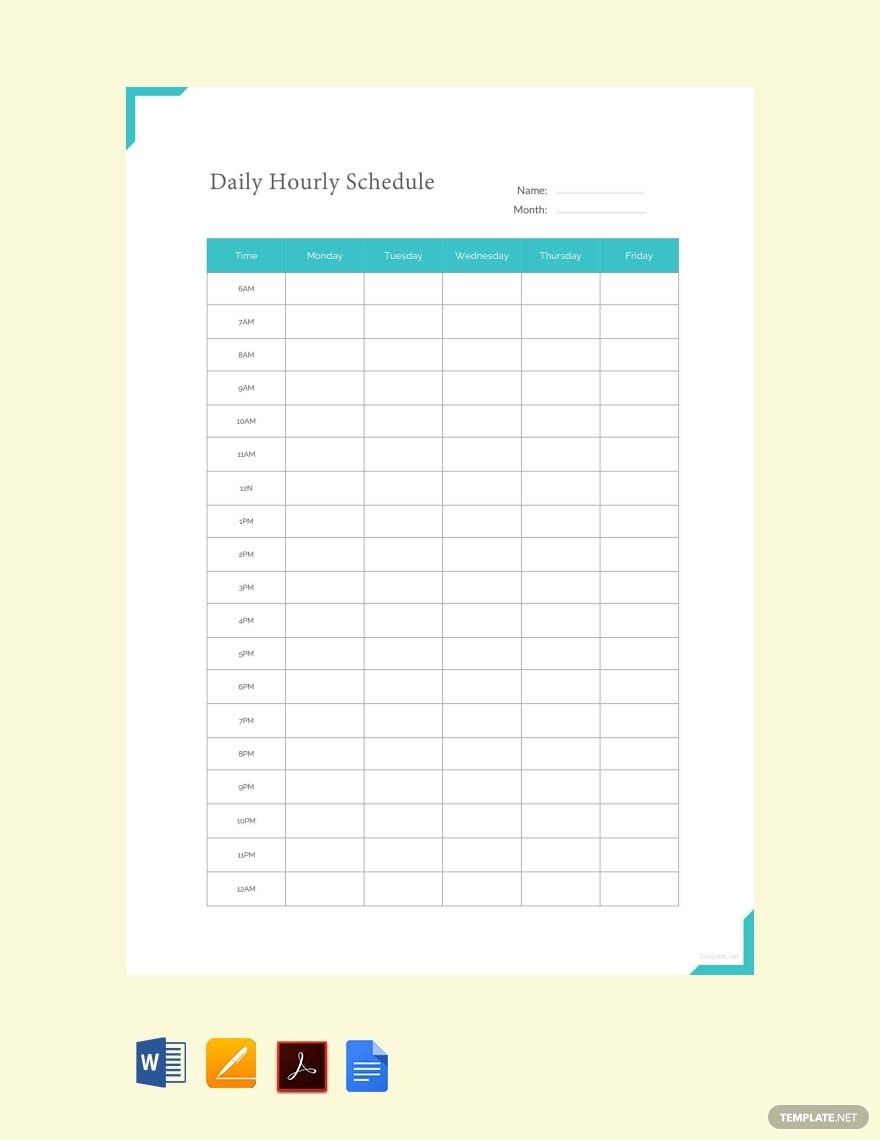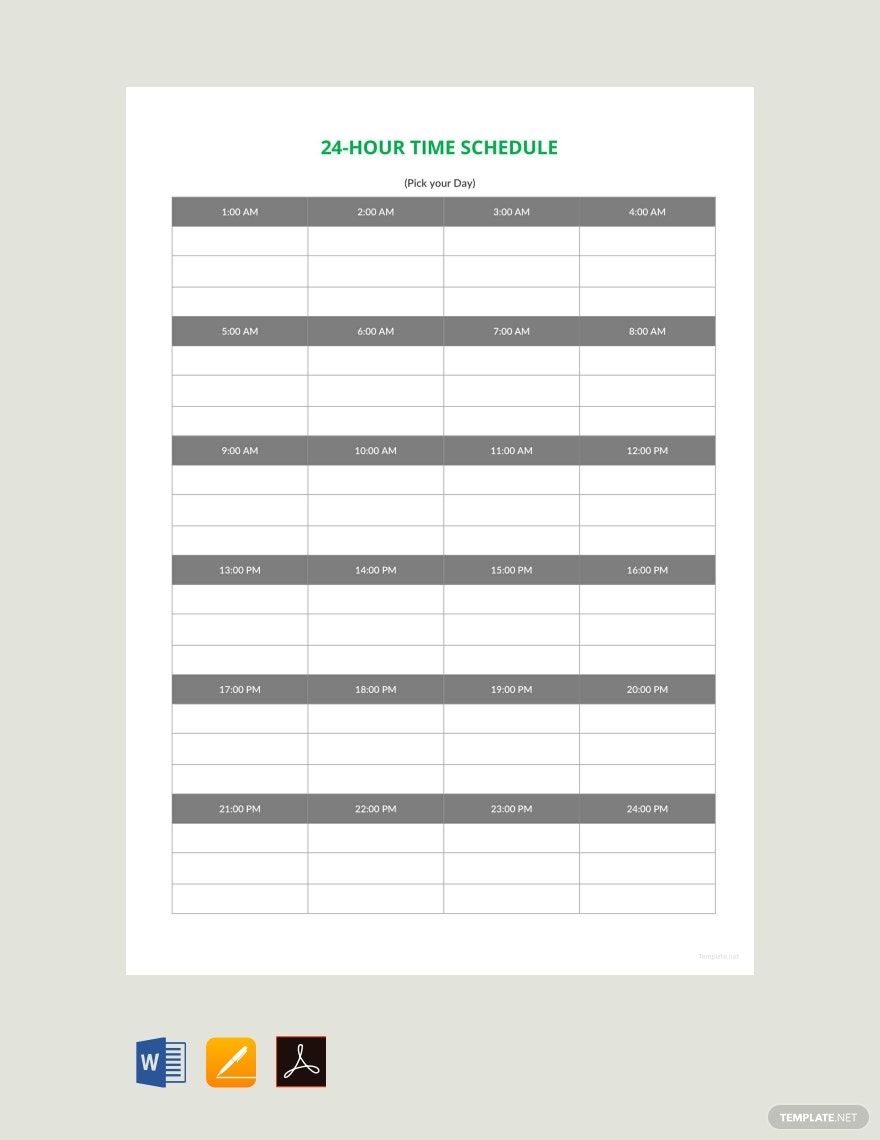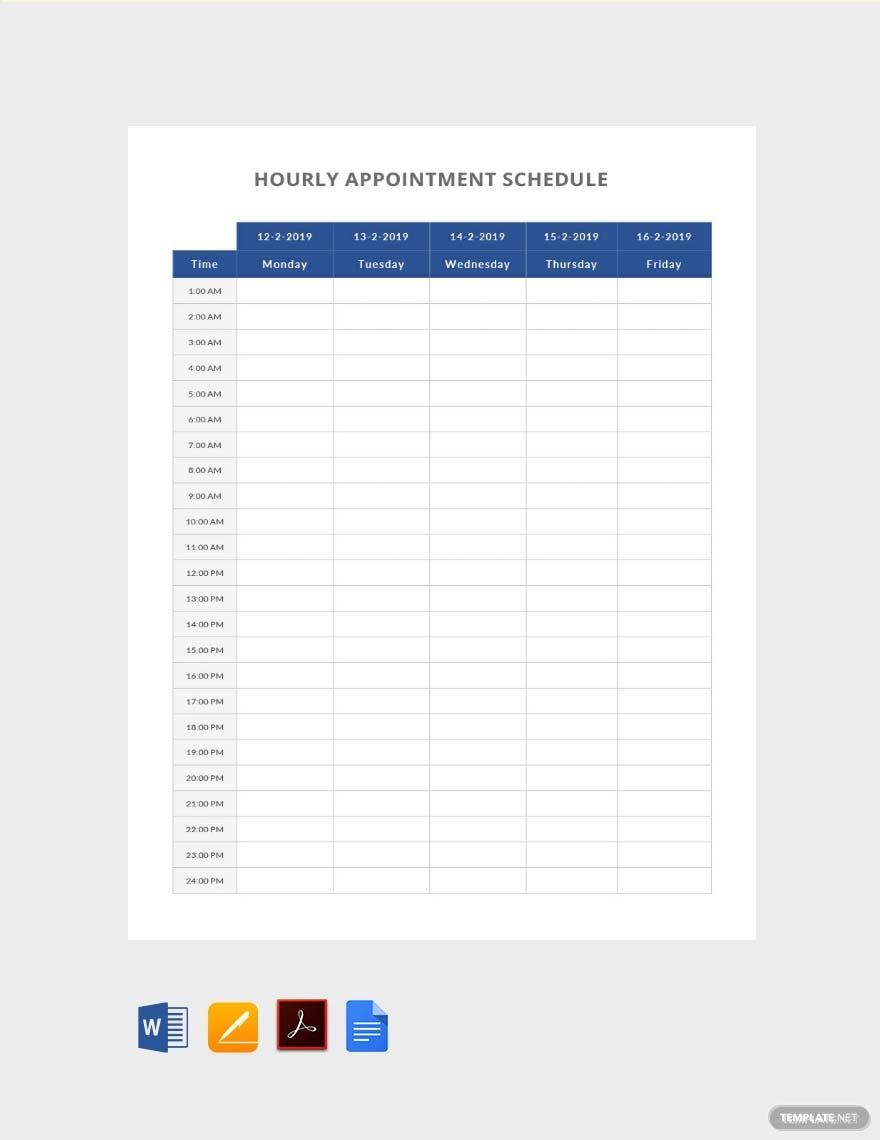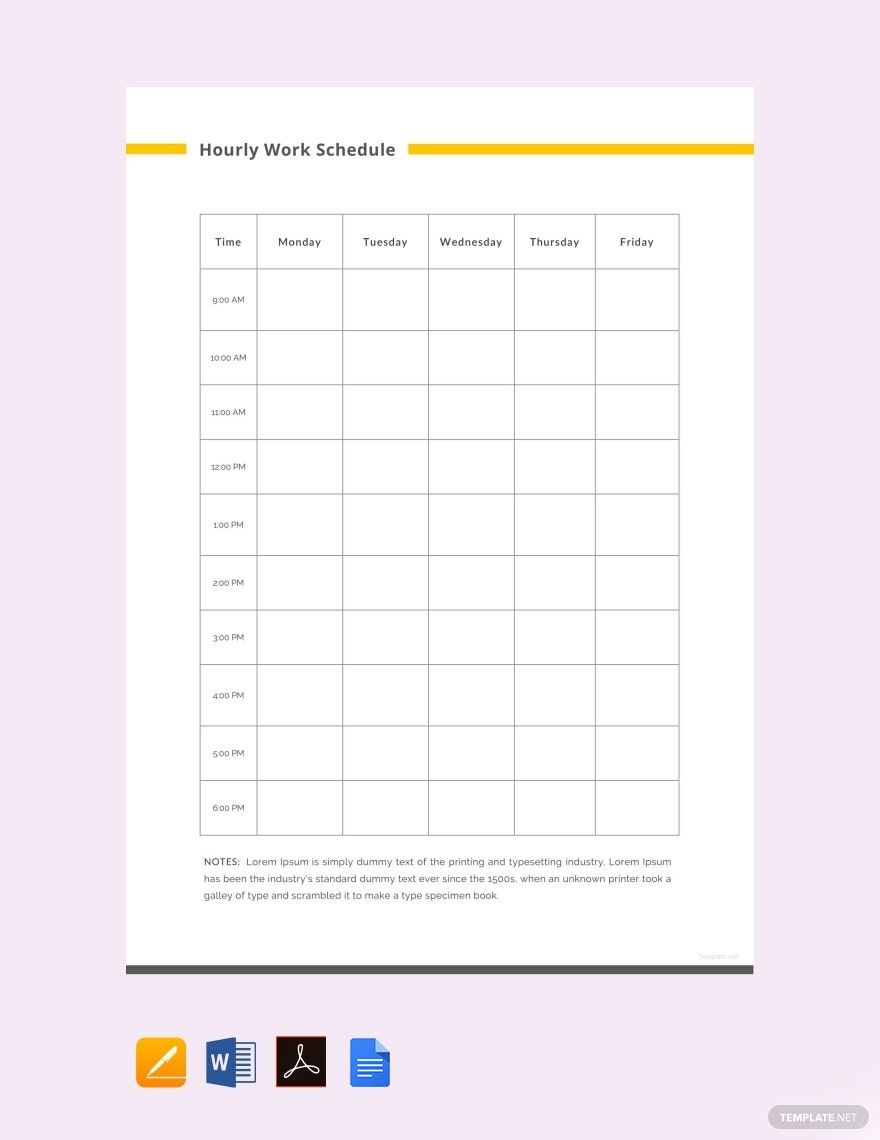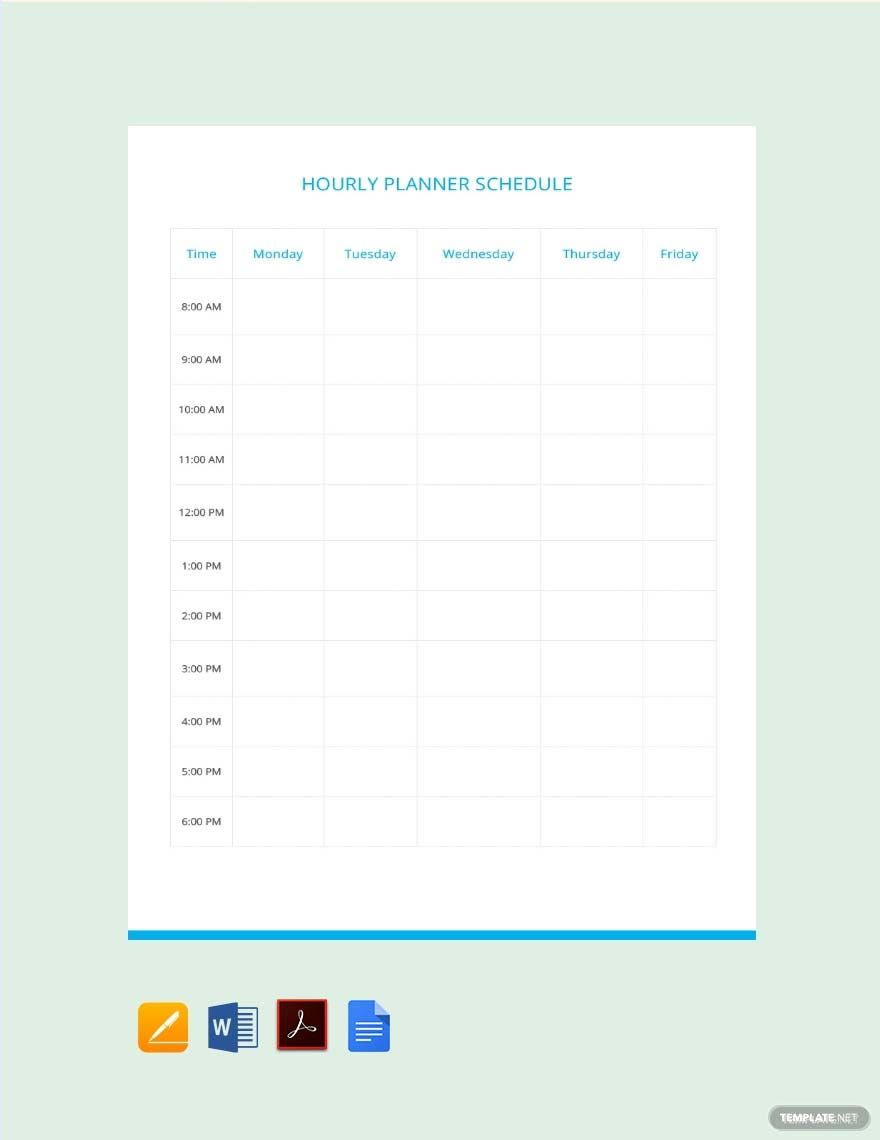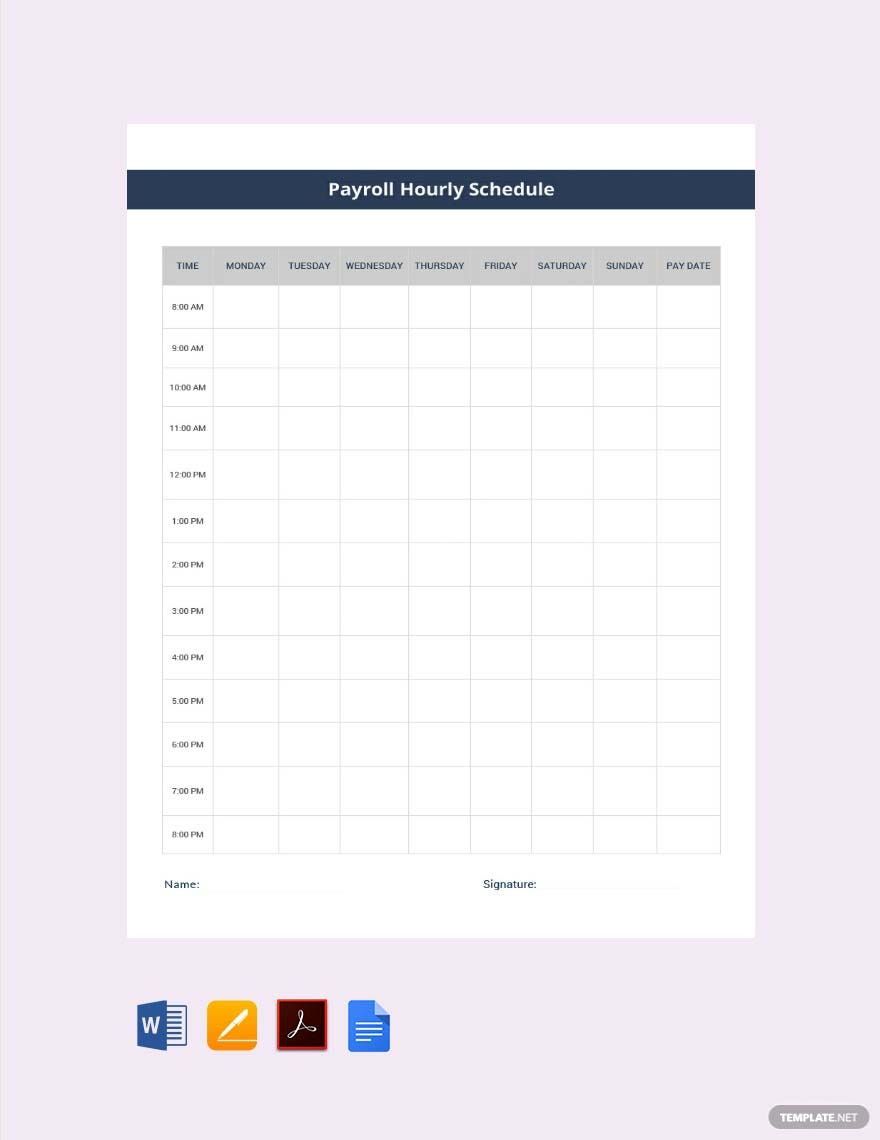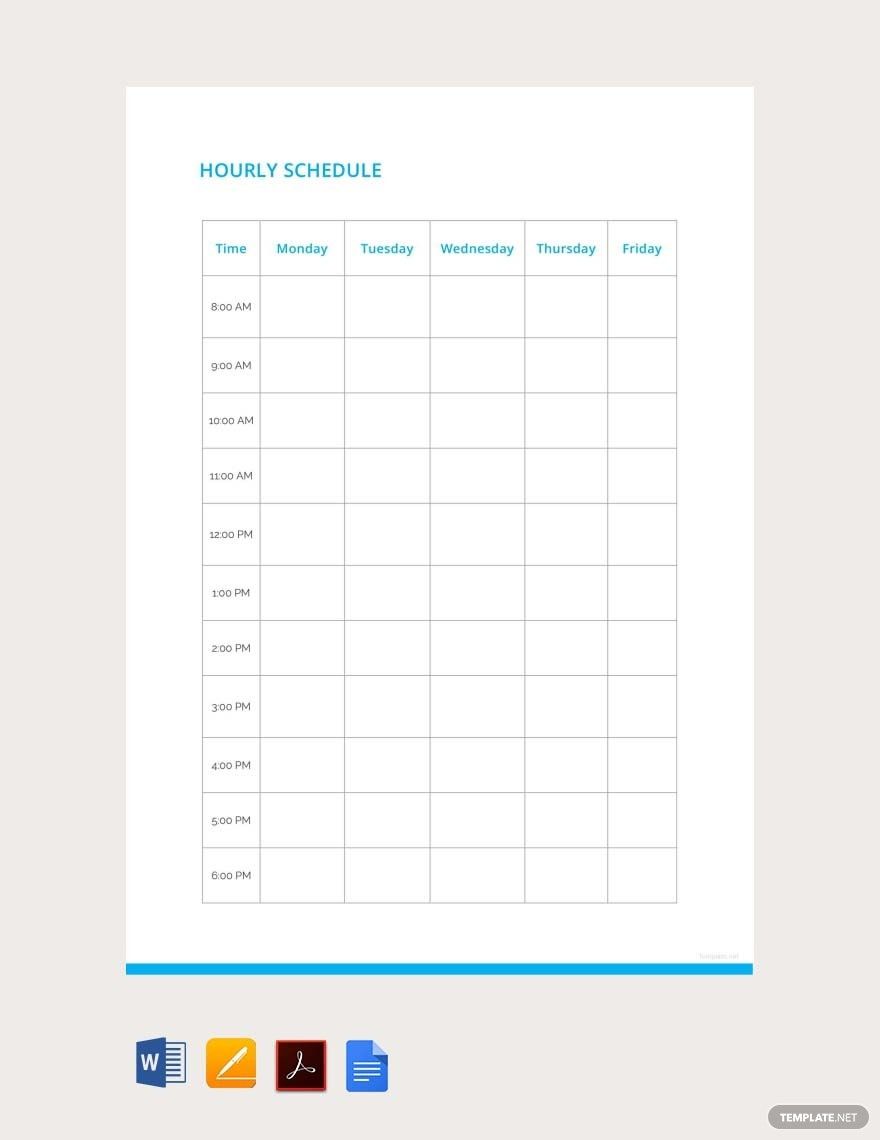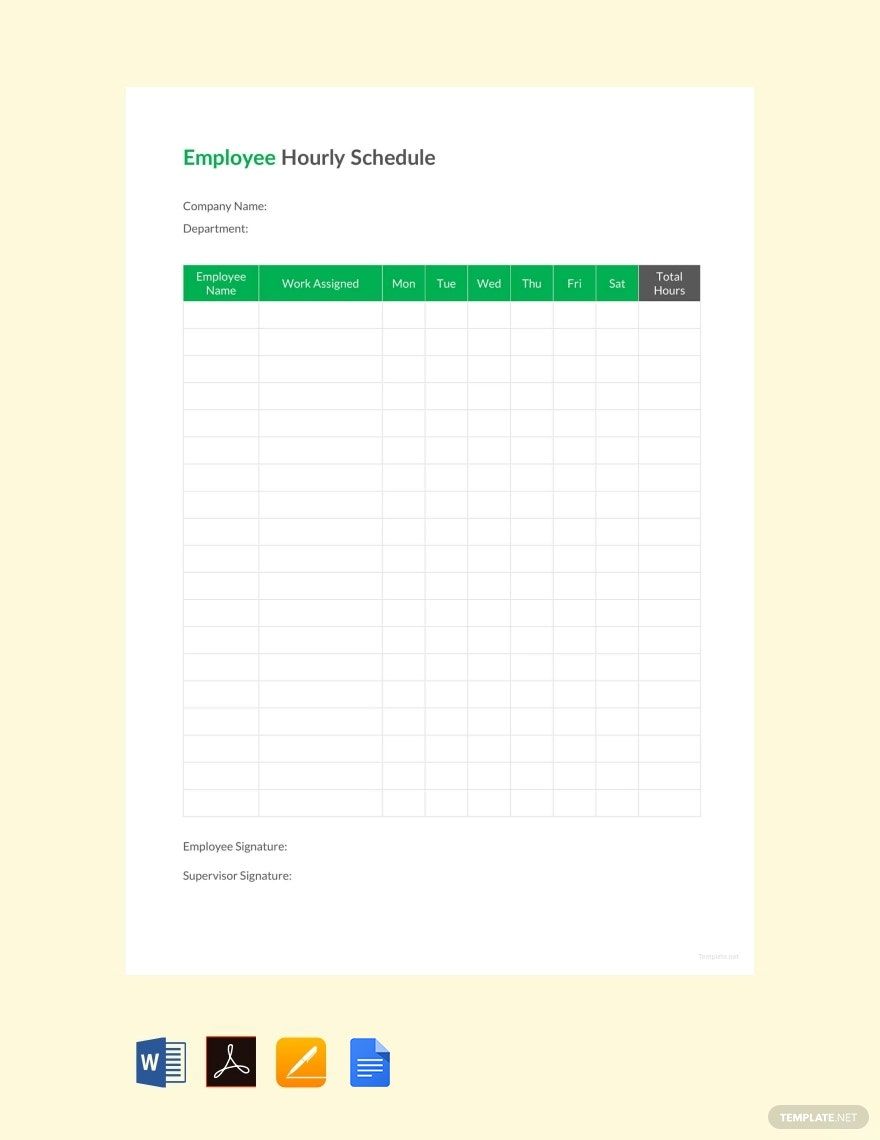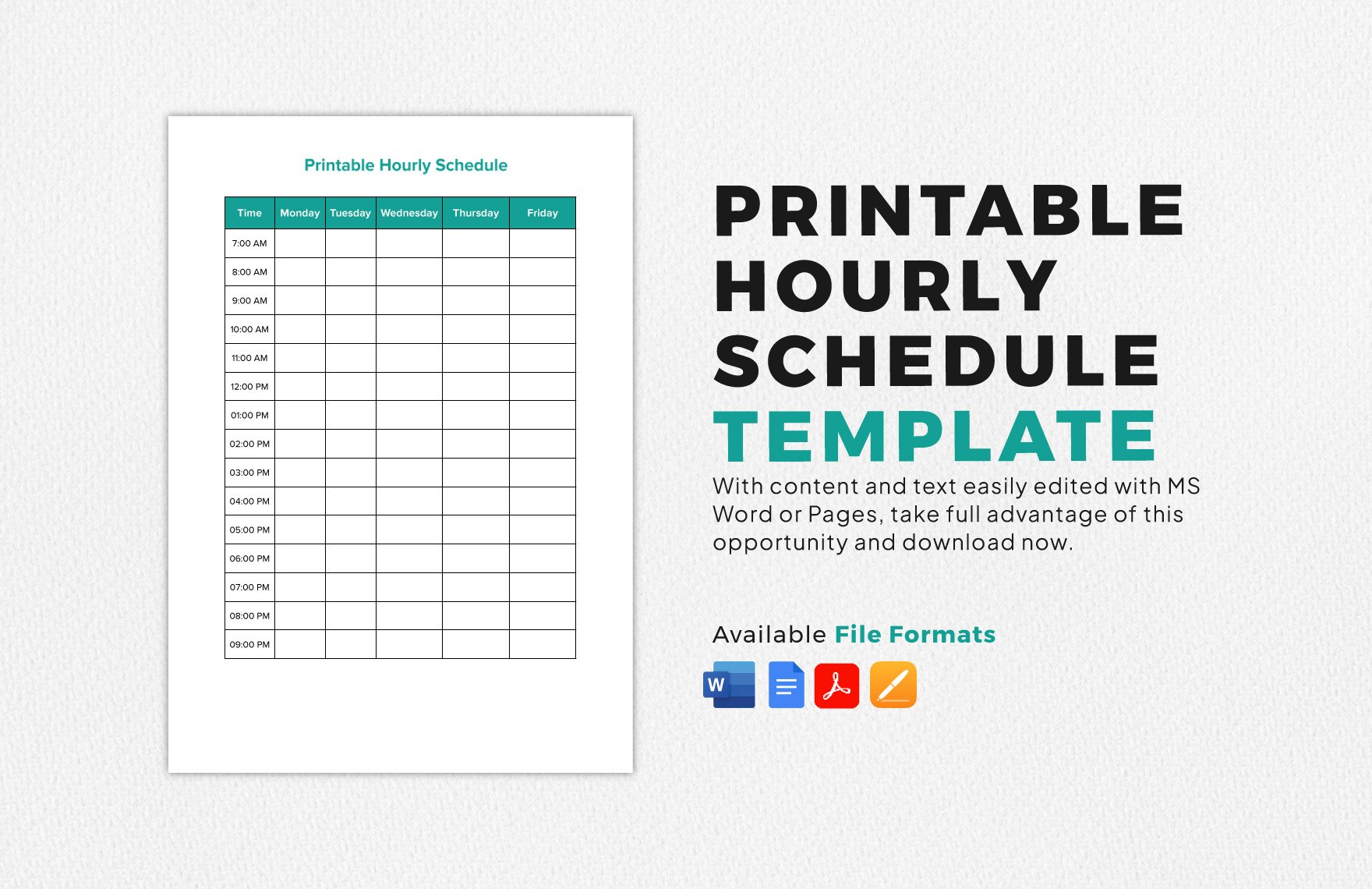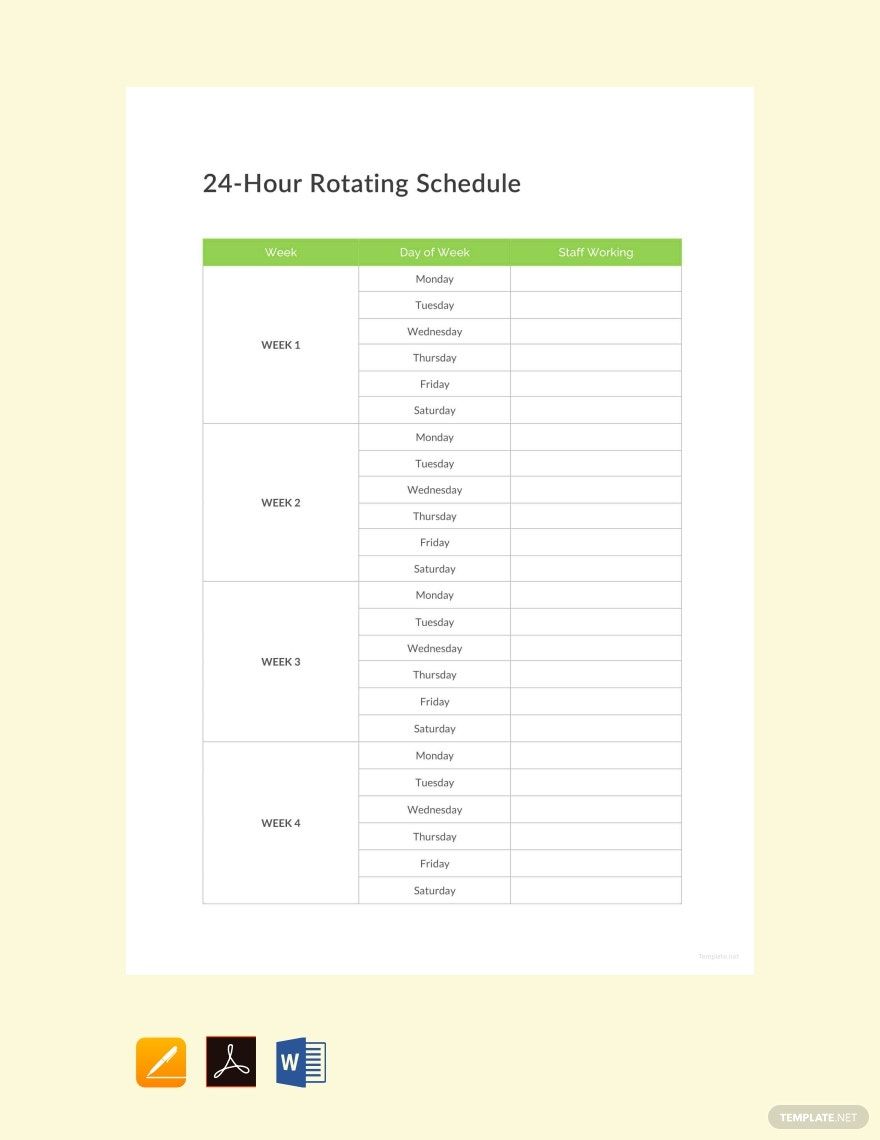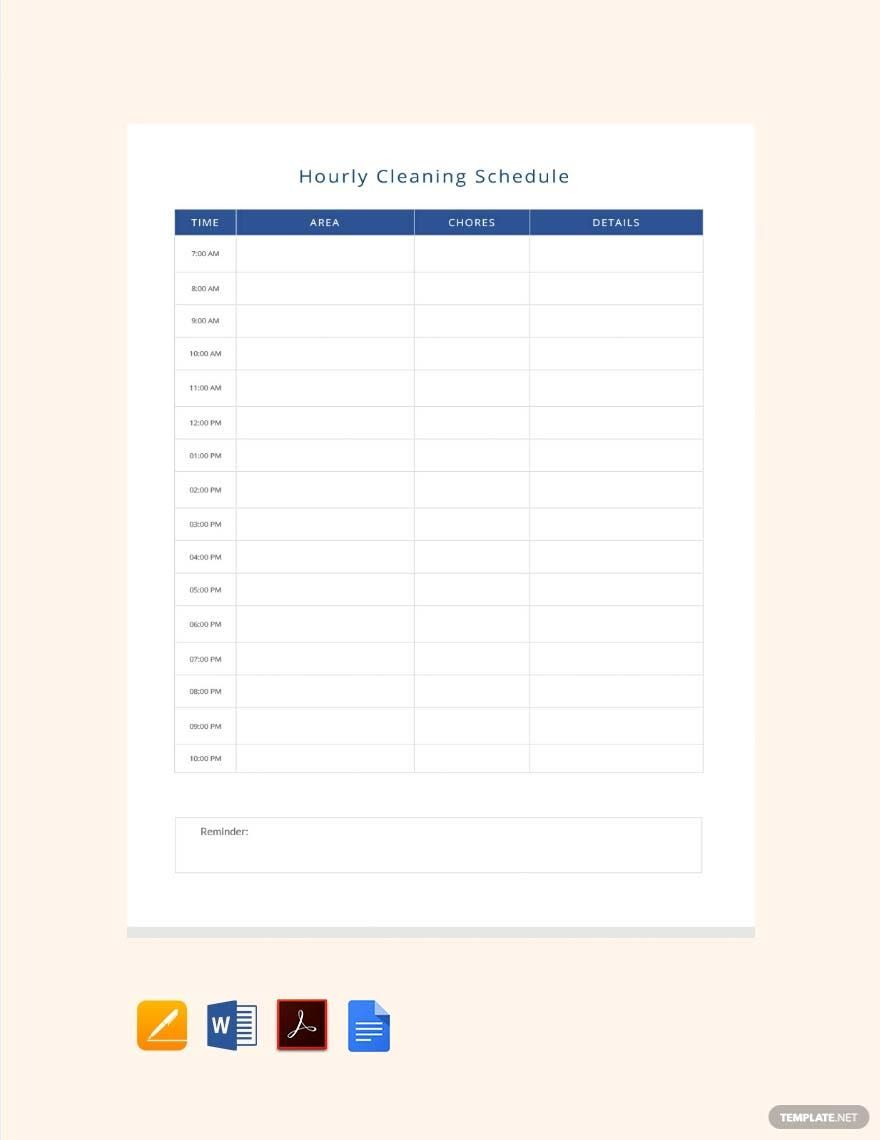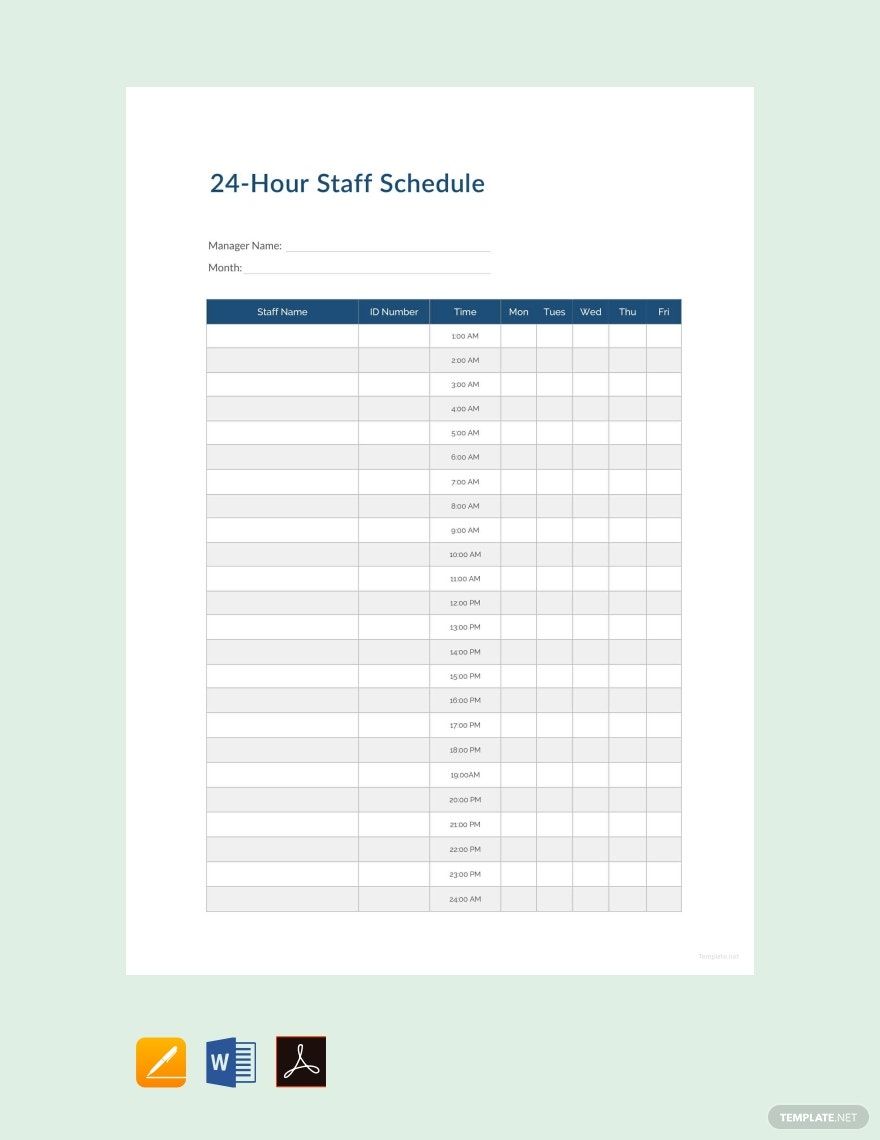Hours can quickly go fast, but not when you have something planned for the moment. If you desire to bring value to an hour, make an excellent planner by using one of our professionally written and beautifully designed Hourly Schedule Templates in Adobe PDF. Make your cleaning, office work, or study fruitful with our 100% customizable templates. Our downloadable samples are available in A4 & US Sizes. Use any of our models to form a monthly, weekly, or daily notebook work schedule. You can also make a timesheet with our templates to allocate proper time for your class, appointment, or shift. Download any of our available models and make your detailed personal calendar today.
Hourly Schedule Templates in PDF
Get creative with customized hourly schedule templates in PDF, free to download and professionally designed. Start organizing today!
